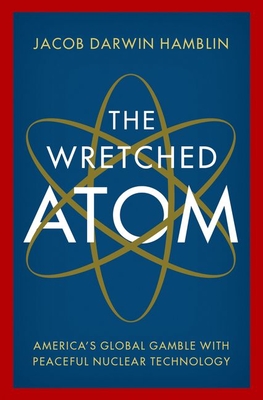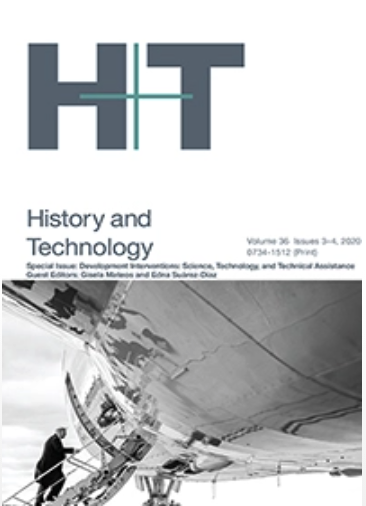 Included here is my review of Audra Wolfe’s fine book Competing with the Soviets, which I read shortly after completing my own Arming Mother Nature. I mention this because the gloom I felt after writing my book may have fallen over me a bit while reading Competing with the Soviets. Although others have evaluated the book principally for its scope and content (it is slim enough to be very useful in a classroom, and fills a crucial niche by connecting science to politics), I read it as an indictment of America’s faith in scientists. The editors at Chemical Heritage, where the review appeared, encouraged me to tone down the negativity (about scientists, not about Wolfe) in my first version, which I’d called “A Dr. Strangelove for All Seasons.” Fair enough. Here is the upbeat version, which appeared under the title “Promises, Promises.”
Included here is my review of Audra Wolfe’s fine book Competing with the Soviets, which I read shortly after completing my own Arming Mother Nature. I mention this because the gloom I felt after writing my book may have fallen over me a bit while reading Competing with the Soviets. Although others have evaluated the book principally for its scope and content (it is slim enough to be very useful in a classroom, and fills a crucial niche by connecting science to politics), I read it as an indictment of America’s faith in scientists. The editors at Chemical Heritage, where the review appeared, encouraged me to tone down the negativity (about scientists, not about Wolfe) in my first version, which I’d called “A Dr. Strangelove for All Seasons.” Fair enough. Here is the upbeat version, which appeared under the title “Promises, Promises.”
Audra J. Wolfe. Competing with the Soviets: Science, Technology, and the State in Cold War America. Baltimore: Johns Hopkins University Press, 2012. 166 pp. Cloth $45; paper $19.95.
Review by Jacob Darwin Hamblin, originally published in Chemical Heritage Magazine (Fall 2013/Winter 2014), 42-43.
As a creator of Cold War catchphrases, President Dwight Eisenhower ranks high. His presidency gave us “Atoms for Peace,” “massive retaliation,” and the most famous of all, the “military-industrial complex.” This last was a parting shot in his farewell address to the nation. He could not believe what the United States had become. Instead of building strong industries that could be mobilized for war, as was the case before World War II, the United States had built a permanent peacetime armaments industry. Even more surprising, it was dominated by the “scientific-technological elite”—another of Ike’s catchphrases—an ill-defined group that had gained an alarming amount of influence in military, business, and political circles. Such scientists and technocrats were later caricatured in Stanley Kubrick’s 1964 satire Dr. Strangelove. These elites believed they could apply scientific principles to every domain of government and industry, despite a lack of experience in military command, business, or much else outside of their labs and offices.
Was Eisenhower right to warn Americans about these people? Reading Audra Wolfe’s book on science and the state in Cold War America, it is hard to avoid thinking that his warnings should have been heeded. For half a century American scientists collaborated with the federal government in unprecedented ways. Many scientists felt that as long as the principles of “basic science” were respected and that scientists could pursue their own ideas, it made no difference who paid the bills. But others, especially in the early years after the war, feared military funding could distort science. The concerned clamored for a civilian funding agency, which led to the creation of the National Science Foundation in 1950.
What is striking today is the one-sidedness of these anxieties. Many worried that military values and concerns would misdirect science. But why did the general public never worry that scientific thinking would completely alter social policies, federal budgets, political agendas, and plans for war and nation building? Competing with the Soviet Union meant leading the world in science and technology, and it also meant using science to win the hearts and minds of the world. Not only were there space races and arms races, there were also struggles to combat poverty and efforts to develop American visions of economic change to rival the ones set forth by Karl Marx. Scientific experts shaped the course of events far outside the laboratory, in domains ranging from health-care reform to wholesale village relocation in Southeast Asia. In Competing with the Soviets we finally have an accessible book that shows not the distortion of science by a military-industrial complex but rather the extraordinary, often-misguided faith that Americans put in science sponsored by the federal government.
Scientists’ Cold War romance with the U.S. government produced boom times for research, but it also affected human lives on a scale that in retrospect is shocking. After World War II, but especially in the 1960s, experts from the natural and social sciences found an audience in government agencies hoping to ground their policies in the latest research findings. Promises abounded, from abolishing poverty to winning a war in Vietnam. Scientists even convinced young President John F. Kennedy that putting a man on the moon would be an important test of the United States’ democratic, capitalist system in its battle against the Soviet totalitarian, Communist one. In gamble after gamble the federal government put the futures of American citizens in scientists’ hands.
There seemed to be no end to the problems scientists thought they could solve, including racial tensions, inequality, and social welfare. For example, Wolfe shows how military-style think tanks applied cost-benefit analysis and game theory (designed to explain how rational individuals make choices) to President Lyndon Johnson’s War on Poverty, giving rise to such major programs as Head Start. She also demonstrates how processes of economic development were deliberately cast in ways that differed from the Soviet Union’s story of class warfare. The most famous was Walt Rostow’s notion of “stages” of economic growth, a key part of a broad set of ideas known as modernization theory. Rostow convinced Johnson that all nations could follow a path that by stages leads to an American-style, consumer society. Such ideas not only informed nation-building strategies in Vietnam but also motivated an American foreign-policy push for a decade of global development in which the ideas of American scientists would shape the actions of developing countries.
Poverty didn’t end, and the war in Vietnam failed. Wolfe suggests that these unfulfilled promises led Americans to question their new faith, especially during the Johnson years when the War on Poverty had been an important presidential initiative. Politicians grew frustrated with the inability to document the effectiveness of social-welfare programs, and think-tank experts gained the reputation of having been the architects of violence abroad. War protests on campuses targeted university scientists for their complicity in the war effort. In addition, accusations of corruption in international development agencies suggested that “development” was not as easy or straightforward as scientists made it out to be. Wolfe observes that the failures of these science-based solutions and the persistence of these problems sparked a wave of disillusionment.
Yet there were some spectacular successes. One was the 1969 lunar landing, a moment when the collaboration between scientists and the federal government achieved its objective. It accomplished an extraordinary feat of science and technology, and dazzled viewers all over the world as they watched astronauts place an American flag on the moon. Still, in Wolfe’s telling, the scientists had fallen, and even occasional bursts of enthusiasm for high-profile successes could not put Humpty Dumpty back together again.
Competing with the Soviets is engaging, and its style of scholarship will intimidate no one. Despite being a synthesis of a huge range of events and sources, the book is slim and easily digested, and readers need no prerequisite science to evaluate the author’s ideas. Wolfe takes us from one constellation of promises to the next, showing how scientists tried—and quite often failed—to apply their worldviews to a multitude of society’s problems.
Jacob Darwin Hamblin is an associate professor of history of science at Oregon State University. He is the author of Arming Mother Nature: The Birth of Catastrophic Environmentalism.




Leave a comment